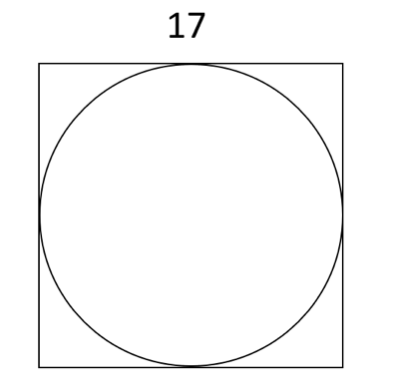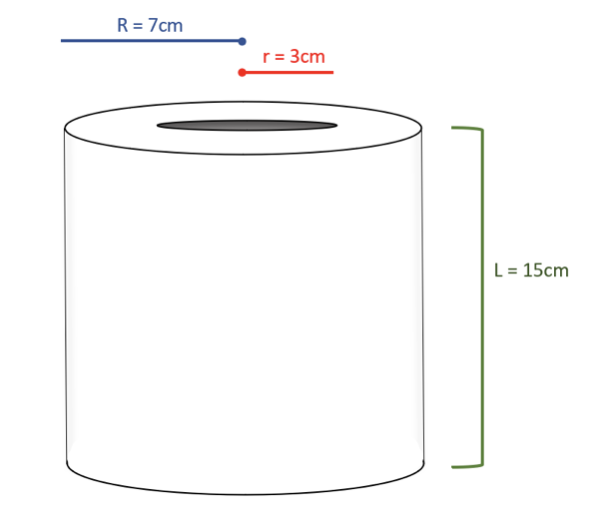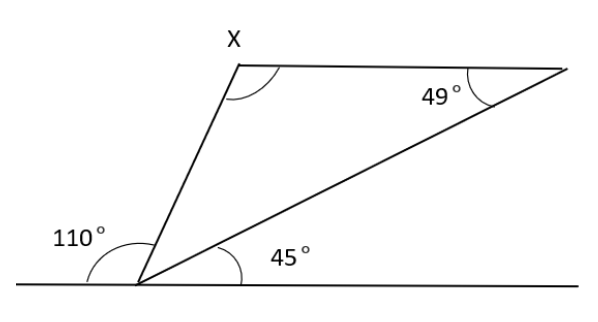ACT
Practice Questions
English Section
Passage
The Dust That Measures All Our Time
By Steven Connor From the mythical Sandman, who participates in dream and vision, to an irritating grain lodged in the beachgoer’s eye, sand harbours unappreciated power, however mundane. Steven Connor celebrates this “most untrustworthy” type of matter. October 13, 2021
Sand belongs to the great, diffuse class, undeclared, rarely described, but insistent and insinuating, of what may be called quasi-choate [1] matters among them mist, smoke, dust, snow, sugar, cinders, sleet, soap, syrup, [2] mud, toffee, grit. Such pseudo-substances hover, drift, and ooze between consistency and dissolution, holding together even as they come apart from themselves. And, of all of these dehiscence matters, [3] sand is surely the most untrustworthy, the most shifting and shifty.
Surely the most treacherous of all kinds of sand is quicksand, whose prefix indicates that it is alive enough to hunger for the lives of the [4] unweary. Quicksand doubles the dubiousness of what is already an uncertain substance; where sand is hard and soft at once, [5] quicksand, a fine sand that has become saturated with liquid is also amphibiously wet and dry, bonelessly loose, yet syrup- gluey.
Sand is reversible. Only utter desiccation can attain to this pouring, milk-smooth liquefaction. [6] Sand-baths was used in the ancient world both to draw out the damp ague of rheumatism and as a kind of sauna, to promote perspiration. Sand is the product of abrasion, [7] but also itself abrasive used in sand-blasting to etch and burnish. Pliny tells us of the use of sand under a saw edge to make a clean cut in marble and [8] to polish it after it has been carved.
[9]Sand is temporary. It is also the most temporized form of matter. It is the image or allegory of time, shifting, yet unshiftable. It seems a compiling of the minced, mounded years that go into its making, and grains of sand imitate the elementary atoms of time, moment upon pattering moment. Sand is featureless, without joints or divisions, even though it is nothing but division all the way down. Yet it is this very feature that makes it useful in the measurement of time, for, unlike other materials, [10] sand likes to flow easily and regularly, even as its volume diminishes.
Sand-glasses came into use in part because of the [11] need to measure time at sea, far from any landmark; speed would be measured by counting the number of knots in a rope paid out from the back of the ship in the time it took for the sand to run through a half-minute glass. A half-hour period of watch, known as a “glass”, was also measured in this way. [12] Grains of sand in the form of quartz crystals with their precise oscillations, still micro-regulate our time. In fact, the sand in hourglasses was often not quartz sand at all, but [13] powered marble, or eggshell. But we find it hard to give up the idea of the [14] ability of sand and the glass through which it runs, since silicates of sand are still the most important source of glass.
By Steven Connor From the mythical Sandman, who participates in dream and vision, to an irritating grain lodged in the beachgoer’s eye, sand harbours unappreciated power, however mundane. Steven Connor celebrates this “most untrustworthy” type of matter. October 13, 2021
Sand belongs to the great, diffuse class, undeclared, rarely described, but insistent and insinuating, of what may be called quasi-choate [1] matters among them mist, smoke, dust, snow, sugar, cinders, sleet, soap, syrup, [2] mud, toffee, grit. Such pseudo-substances hover, drift, and ooze between consistency and dissolution, holding together even as they come apart from themselves. And, of all of these dehiscence matters, [3] sand is surely the most untrustworthy, the most shifting and shifty.
Surely the most treacherous of all kinds of sand is quicksand, whose prefix indicates that it is alive enough to hunger for the lives of the [4] unweary. Quicksand doubles the dubiousness of what is already an uncertain substance; where sand is hard and soft at once, [5] quicksand, a fine sand that has become saturated with liquid is also amphibiously wet and dry, bonelessly loose, yet syrup- gluey.
Sand is reversible. Only utter desiccation can attain to this pouring, milk-smooth liquefaction. [6] Sand-baths was used in the ancient world both to draw out the damp ague of rheumatism and as a kind of sauna, to promote perspiration. Sand is the product of abrasion, [7] but also itself abrasive used in sand-blasting to etch and burnish. Pliny tells us of the use of sand under a saw edge to make a clean cut in marble and [8] to polish it after it has been carved.
[9]Sand is temporary. It is also the most temporized form of matter. It is the image or allegory of time, shifting, yet unshiftable. It seems a compiling of the minced, mounded years that go into its making, and grains of sand imitate the elementary atoms of time, moment upon pattering moment. Sand is featureless, without joints or divisions, even though it is nothing but division all the way down. Yet it is this very feature that makes it useful in the measurement of time, for, unlike other materials, [10] sand likes to flow easily and regularly, even as its volume diminishes.
Sand-glasses came into use in part because of the [11] need to measure time at sea, far from any landmark; speed would be measured by counting the number of knots in a rope paid out from the back of the ship in the time it took for the sand to run through a half-minute glass. A half-hour period of watch, known as a “glass”, was also measured in this way. [12] Grains of sand in the form of quartz crystals with their precise oscillations, still micro-regulate our time. In fact, the sand in hourglasses was often not quartz sand at all, but [13] powered marble, or eggshell. But we find it hard to give up the idea of the [14] ability of sand and the glass through which it runs, since silicates of sand are still the most important source of glass.
MATH SECTION



Reading Comprehension Section
Porch Memories
By Federica Soletta
One day, in a thrift store in Brooklyn, I found a box full of old family photographs. I felt immediately the reality of the people depicted, and with that sense came many questions, along with a churning curiosity about their lives and deaths. Old photographs often work that way. But here there was something else, too. Something that caught my attention — something perhaps unremarkable to an American eye but certainly unusual to a foreigner like me. My punctum, in these images, had the shape of a rigid frame, a structural element present in many of the photographs, although never as the main actor: the American porch.
Typically made of wood and partially surrounding the house, the porch is a boundary between the outside world and the intimacy of a home’s interior, seen and lived as both a private and an open space. In the U.S., the porch is an adaptation, a point of convergence of different architectural traditions: an adjustment to the many European revivals of the nineteenth century and an assimilation of Haitian house styles, imported by free Black people in the South, probably coming from West Africa. Perhaps, even a liminal zone between civilization (the house itself) and the wild (the outer world). In these terms, the porch is a kind of frontier. In America, it becomes a transverse element — seen across Victorian mansions, landowner houses, and low- income habitations — and spans geographies as well: while always more predominant in the South, porches, in many forms, achieved wide popularity in the whole of the United States. Even more ubiquitous than the porch in America are American porch photographs. Since the end of the nineteenth century, the American porch became a privileged background for family portraits. Is it possible to speak of a “photographic tradition”? And if so, how did this “photographic tradition” evolve? What kind of history, and how many stories, do these photographs narrate? What kind of archive have they produced? What do they suggest to us about photography, about family photographs, and, most explicitly, about American history and families?
The people in most family photographs pose, play, or smile, and are usually aware of the photograph being taken. While the families are different, the formal similarities are many: the group arrangements, the closeness of the subjects, likenesses across the components of the group, or their generational gaps. In the photographs that follow, the construction of the visual space, too, becomes a common element. It is a backdrop or setting for the protagonists, who stand in front of (or just outside) the entrance door of their house. Although they are not inside, they still feel “at home” in a space of transition and safety: on the porch or just close by it.
Photo-historian Geoffrey Batchen reminds us that snapshots are an art historian’s worst nightmare, for they resist “value judgments”, which is, of course, “a key element of traditional art historical practice”. Agreeing with him, my intention is not to invent an art history of “the porch photograph”, for these photographs do not belong to the world of art history. Nor do I aim to search for the people portrayed in the photographs, or to elucidate what specific action is depicted in each image. Instead, here I will treat these photographs as objects of and for history, a history in the lower case. “All photographs”, John Berger once wrote, “are contributions to history, and any photograph, under certain circumstances, can be used in order to break the monopoly which history today has over time”. In weaving fictitious and real memories, personal and quoted reflections, these notes attempt to “ventriloquize” the images and to listen to them, without a storyline or individual captions. Banal, yet tender, this set of photographs does not only portray the daily gestures of life on the porch and the functionality of this distinctive space. These images can also be used as a lens by which to reveal other scenes and stories. Or possibly for looking differently — with a different gaze — at our own history: either the old history of a nation or a new history of photography. My thoughts will serve as suggestive threads, but to you, reader, is left the final interpretation.
By Federica Soletta
One day, in a thrift store in Brooklyn, I found a box full of old family photographs. I felt immediately the reality of the people depicted, and with that sense came many questions, along with a churning curiosity about their lives and deaths. Old photographs often work that way. But here there was something else, too. Something that caught my attention — something perhaps unremarkable to an American eye but certainly unusual to a foreigner like me. My punctum, in these images, had the shape of a rigid frame, a structural element present in many of the photographs, although never as the main actor: the American porch.
Typically made of wood and partially surrounding the house, the porch is a boundary between the outside world and the intimacy of a home’s interior, seen and lived as both a private and an open space. In the U.S., the porch is an adaptation, a point of convergence of different architectural traditions: an adjustment to the many European revivals of the nineteenth century and an assimilation of Haitian house styles, imported by free Black people in the South, probably coming from West Africa. Perhaps, even a liminal zone between civilization (the house itself) and the wild (the outer world). In these terms, the porch is a kind of frontier. In America, it becomes a transverse element — seen across Victorian mansions, landowner houses, and low- income habitations — and spans geographies as well: while always more predominant in the South, porches, in many forms, achieved wide popularity in the whole of the United States. Even more ubiquitous than the porch in America are American porch photographs. Since the end of the nineteenth century, the American porch became a privileged background for family portraits. Is it possible to speak of a “photographic tradition”? And if so, how did this “photographic tradition” evolve? What kind of history, and how many stories, do these photographs narrate? What kind of archive have they produced? What do they suggest to us about photography, about family photographs, and, most explicitly, about American history and families?
The people in most family photographs pose, play, or smile, and are usually aware of the photograph being taken. While the families are different, the formal similarities are many: the group arrangements, the closeness of the subjects, likenesses across the components of the group, or their generational gaps. In the photographs that follow, the construction of the visual space, too, becomes a common element. It is a backdrop or setting for the protagonists, who stand in front of (or just outside) the entrance door of their house. Although they are not inside, they still feel “at home” in a space of transition and safety: on the porch or just close by it.
Photo-historian Geoffrey Batchen reminds us that snapshots are an art historian’s worst nightmare, for they resist “value judgments”, which is, of course, “a key element of traditional art historical practice”. Agreeing with him, my intention is not to invent an art history of “the porch photograph”, for these photographs do not belong to the world of art history. Nor do I aim to search for the people portrayed in the photographs, or to elucidate what specific action is depicted in each image. Instead, here I will treat these photographs as objects of and for history, a history in the lower case. “All photographs”, John Berger once wrote, “are contributions to history, and any photograph, under certain circumstances, can be used in order to break the monopoly which history today has over time”. In weaving fictitious and real memories, personal and quoted reflections, these notes attempt to “ventriloquize” the images and to listen to them, without a storyline or individual captions. Banal, yet tender, this set of photographs does not only portray the daily gestures of life on the porch and the functionality of this distinctive space. These images can also be used as a lens by which to reveal other scenes and stories. Or possibly for looking differently — with a different gaze — at our own history: either the old history of a nation or a new history of photography. My thoughts will serve as suggestive threads, but to you, reader, is left the final interpretation.
